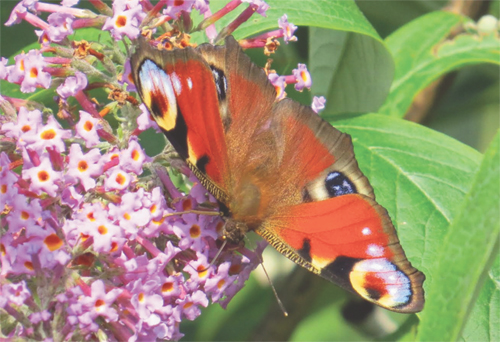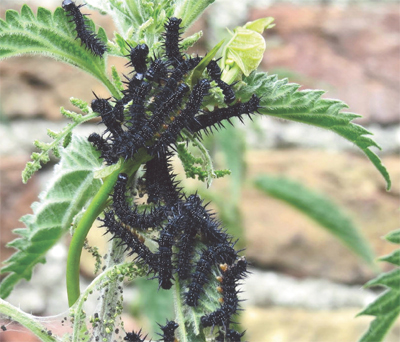| September
/ 2017 - Michael Ryan
|
| Back
in July the
gorse seeds were popping in the blazing sunshine as we settled on a rock from where we could view the Bray Airshow across the bay. But there was a lot more happening in the air apart from the planes. Calls from the base of Killiney Hill below the obelisk drew our attention to some young sparrowhawks (the adult sparrowhawks nest late so the juveniles, not long out of the nest, usually begin calling in the second week of July) trying out their own aerobatics above the treetops. Soon after a kestrel, its distinctive falcon profile, slim and elegant with pointed wings, flew over the Monterey Pines behind us, drifting over to catch the updraft and hang in the air looking for rodents or lizards on the slopes below. It may have been the same kestrel that later flew past below us just over the sea. As it reached the trees a peregrine flew out to harass it and the pair mounted brief skirmishes at each other, more threat than actual serious contact. Beside us on the rock we were joined by a Grayling butterfly, often seen on the granite rocks where, with wings folded, the grey mottled underwing provides perfect camouflage by blending against the surface pattern of the rock. Lucy spotted a hummingbird hawk moth darting by but we couldn’t see where it landed. There’s a buddleia nearby which always seems to attract good numbers of butterflies so when the Bray Airshow was over we thought it might be worth checking to see if the hummingbird hawk moth had stopped there for a feed. |
 Peacock Butterfly on Buddleia Photo: Michael Ryan |
|
|
No
luck, only a Red Admiral on the flowers but we thought we’d walk
down and return through the quarry where we’d seen a hummingbird
hawk moth on another buddleia a few years ago. Down we went through
the Douglas Fir where the ground was carpeted with shredded cones and
scales dropped by feeding squirrels. Earlier in the week we’d
seen grey squirrels in the same trees and presumed they were the source,
so it was a most pleasant surprise to suddenly see two red squirrels
chasing each other around a trunk stopping to stare, or glare, at us
briefly. They went back up the tree and got busy shredding cones to
get at the seed within them sending a little pitter-patter of scales
raining on to the ground. A perfect way to end the day of air and tree
borne sightings. We’d made the arduous climb to the top of the
Cat’s Ladder and thankfully only had a flight of steps to go when,
behind the low wall beside the steps, Lucy spotted dozens of caterpillars
feeding on a patch of nettles. |
||
|
Caterpillars
of the Peacock Butterfly feeding on a nettle |
Predominantly
black with tiny white dots and spikes protruding from each segment of
their body they were caterpillars of the Peacock butterfly which lays
up to 500 eggs at a time. If left undisturbed they’d eat their
way through the nettles then turn into pupae (or chrysalis) which would
hang underneath the stems till finally emerging as our most colourful
butterfly. The adult peacock butterflies that lay the eggs on the nettles will die but the ones that emerge from the chrysalis will be on the wing till autumn when they convert some of their blood sugar into glycerol to act as a kind of anti-freeze that will enable them to hibernate over winter. They will find a secure place to hibernate in a shed or tree where their dull underwings will camouflage them while at rest but if a small rodent gets too close they can flash their wings and the elaborate eye spots on their upper wings will give the impression they’re much bigger creatures then they actually are and hopefully scare off the predator. There were so many potential butterflies there on the nettles we thought it would be worth trying to ensure their survival so we contacted the Parks department and our Dalkey Tidy Towns group. They all agreed not to cut this particular bunch of nettles so we thought they’d be safe enough. With a low wall between them and the path these nettles weren’t likely to sting anyone anyway. But sadly it wasn’t to be and it was a bit of a sickener one morning when we walked down the road to see someone had took it upon themselves to cut down the same clump of nettles. We knew they hadn’t been cut down by any of the people we’d asked since the nettles were untidily hacked down and just left there. It hasn’t been a bad year for butterflies with reasonable temperatures and not too much of the consistent rain which can stop them flying but it was sad this particular little group would never make it. |
|||||
DALKEY HOME PAGE | DALKEY COMMUNITY COUNCIL | DALKEY HERITAGE COMPANY | CANNONAID



